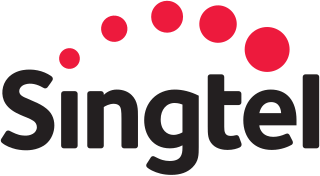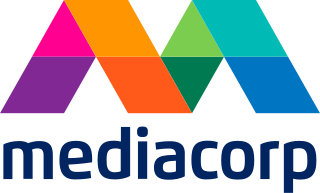Company history
The history of cable TV in Singapore started in 1991, when the Singapore Broadcasting Corporation was interested in setting up a cable network. In January 1991, a US company (Continental Cablevision) studied the feasibility of a cable service in Singapore, showing its interest over the high density of television set ownership (1 set in every 600,000 households). Another company, a subsidiary of the Oversea Chinese Banking Corporation, set up a preliminary survey to study the potential cable market in the country, and in the region by May. After the study, which was set to last a year, the government would greenlight the license. [1] On 11 July 1991, the then Singapore Cable Vision (SCV) was licensed to establish a nationwide broadband cable network to provide pay-TV services. SCV also had the unprecedented responsibility of delivering terrestrial free-to-air (FTA) channels to Singapore households via its cable points, free-of-charge to viewers.
The first of the three channels, NewsVision, came on air on 2 April 1992. [2] Two further channels, VarietyVision and MovieVision, were to be launched on June 1. In December 1991, NewsVision won the rights to carry CNN International programming over BBC World Service Television's output. [3]
Initially, services were delivered over scrambled UHF signals, with the package of three channels being priced in at up to $50, depending on the number of channels the subscriber wanted, with prices comparable to those offered by Sky in New Zealand and Thai Sky TV in Thailand, both of which also offered three channels. [4]
In the setup of the network of channels, SCV announced that the new channels would carry commercials. VarietyVision was set to carry four minutes of advertising per hour, NewsVision, eight minutes per hour and MovieVision was exempt. Ad rates were lower than the ones carried out by SBC's channels and half of the advertising time on NewsVision was shared between local ad slots and those from the relays of CNN International. A $2 million contract with McCann Erickson for advertising was signed. [5]
Withink its first week, SCV claimed to have had an "overwhelming response", according to a print ad from its technological suppliers, Jerrold and General Instrument. [6]
SCV launched MovieVision and VarietyVision on 13 May 1992 (ahead of the initial 1 June target), this time with the goal of achieving 4,500 subscribers (three times the number of subscribers SCV had in May) by the end of June. MovieVision initially broadcast 12 hours a day, offering 30 movies per month, with the aim of increasing its daily schedule to 18 hours a day in January 1993. VarietyVision, broadcasting entirely in Chinese, carried programming from the Chinese world (the mainland, Taiwan and Hong Kong) 18 hours a day Sundays to Fridays and 24 hours a day on Saturdays. [7]
On 23 June 1995, SCV's cable service was launched in Tampines, reaching to 15,000 households in the area's HDB estate, with all 47,000 households expected to be connected by September. Its cabling network exercise cost $500 million; $25 million was spent in the first phase. SCV expected to have 100,000 households connected to its cable network by the end of 1995 with 750,000 households connected in five years. [8]
SCV's cable TV channel offering in 1995 had over 25 channels divided into three tiers – basic tier, international tier and premium tier. [8]
In 1996, SCV had 7,221 subscribers with a 28% penetration rate out of the 25,000 homes that SCV marketed. [9]
As of January 1996, 52,271 homes in Tampines and Pasir Ris were connected to SCV. SCV expected to reach 250,000 homes by the end of 1996. [9]
Phoenix Chinese Channel was added on 1 December 1996. [10] Cinemax and TV5 were added on 1 April 1997; SCV provided a free preview of the latter from 28 to 31 March 1997. [11]
In 1997, SCV aimed to have 90% of 800,000 houses in HDB estates to be connected to SCV cable by the end of 1998. [11]
In 1999, SCV completed the construction of its S$600 million network, and in recognition of its nationwide cabling effort, SCV was granted exclusivity in the provision of pay-TV services until 2002. As the nation developed, Singaporeans began to embrace pay-TV as an additional source of lifestyle entertainment, in addition to other entertainment sources such as cinemas, the internet, and DVD/VCD purchases/rentals.
In 2002, StarHub completed its merger with Singapore Cable Vision and has adopted its name until in 2007, [12] [13] where StarHub Cable Television was renamed to StarHub TV, its current name. [14]
On 17 February 2009, StarHub announced that their television will be converted to digital and analogue set-top boxes will be terminated by 30 June 2009, beginning a phase of digital television transition in Singapore. [15]
On 30 April 2010, channel numbers for StarHub TV were overhauled into a three-digit numbering system, allowing easier recall for subscribers. The channels were also classified into eight categories based on their genre and first number. [16]
On 1 August 2010, StarHub TV will cease broadcasting the Barclays English Premier League for the 2010/11, 2011/12 and 2012/13 seasons as it did not procure the rights to do so. Its carriage of Goal TV 1, Goal TV 2, ESPN, STAR Sports and STAR Cricket will also cease at the same time. The ESS channels were unavailable on StarHub's platform for three years until in December 2012, it was announced that ESPN, STAR Sports and STAR Cricket will return to StarHub on 14 December on a non-exclusive basis. The channel was revived after StarHub TV acquired its rights to broadcast the 2018-19 season of UEFA Champions League. [17]
Rediffusion Singapore was added to StarHub TV in October 2010 as RediGold, the first FM channel to be broadcast on cable television; however, both Rediffusion and RediGold ceased transmission on 1 May 2012 due to a decline in listenership. Rediffusion resumed its transmission on 11 November 2013, but through internet. [18]
Since 2010, many channels were made for free-viewing for a brief period of time to commemorate a holiday. Its first free preview was held between 28 May to 13 June due to a school holiday. [19] Since then, a weeklong free previewing of channels were held on other major public holidays.
On 31 May 2011, StarHub TV's Preview Channel (Channel 101) became ScreenSingapore Channel for a duration from 1 to 19 June, before reverting to Preview Channel.
Many channels had, over time, ceased broadcast on StarHub TV to make way for newer channels, such as JimJam, JET TV, NEO Cricket, TTV World and MGM. On 15 February 2012, Playin' TV, a television-gaming service channel, was also ceased.
On 18 March 2013, StarHub launched its first fibre-optic IPTV television, beginning another transition of cable television. [20] The IPTV was rolled out to residential customers on 8 April 2015. [21]
In an announcement made on 1 November 2018, cable television will cease transmission by 30 June 2019. [22] However, StarHub followed up with another announcement on 24 June 2018, saying that cable services will end on 30 September 2019 instead, giving consumers until 31 August 2019 to switch to fibre. [23] StarHub completed the move to fibre networks on 30 September 2019. [24]










